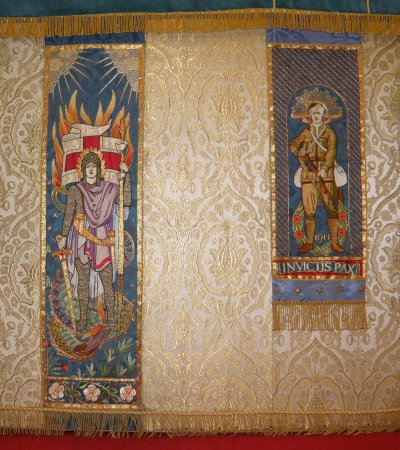
These panels are located to the left of the central panel. At the extreme left is an image of St George, depicted as a warrior in his armour, with lance and drawn sword in his hands. He is standing on a dragon, which breathes fire up between his legs. The relevance of this image for a memorial of World War I is evident.
An even more direct reference to the war is provided by the actual representation of a wounded AIF soldier, his head surrounded by the AIF rising sun insignia, whose rays extend to make up a kind of halo. There appears to be no visual equivalent of this image anywhere else in Australia, though there are suggestions of something similar in the depiction of a nurse as an angel. But there were verbal parallels. When the member of parliament for Toowong called the war dead 'real saints', he was far from alone in holding such an opinion. In the parish paper, Hughes had written of those who died in battle as though they were the equivalent of martyrs given entry to Paradise through a baptism of blood. Conversely, even in the early years of the war, there were Australian writers who gave voice to the rejection of such imagery by some of the troops. That it was so much false rhetoric was clearly the view of H. McCann when he wrote